Quantic - Accounting and Finance
1/188
There's no tags or description
Looks like no tags are added yet.
Name | Mastery | Learn | Test | Matching | Spaced |
|---|
No study sessions yet.
189 Terms
Generally Accepted Accounting Principles (GAAP)
US companies' standard set of rules for the reporting and recording of financial data
International Financial Reporting Standards (IFRS)
Foreign companies' standard set of rules for the reporting and recording of financial data
Balance Sheet
A financial statement that reports assets, liabilities, and owner's equity on a specific date. Gives a glimpse into the health and composition of a business.
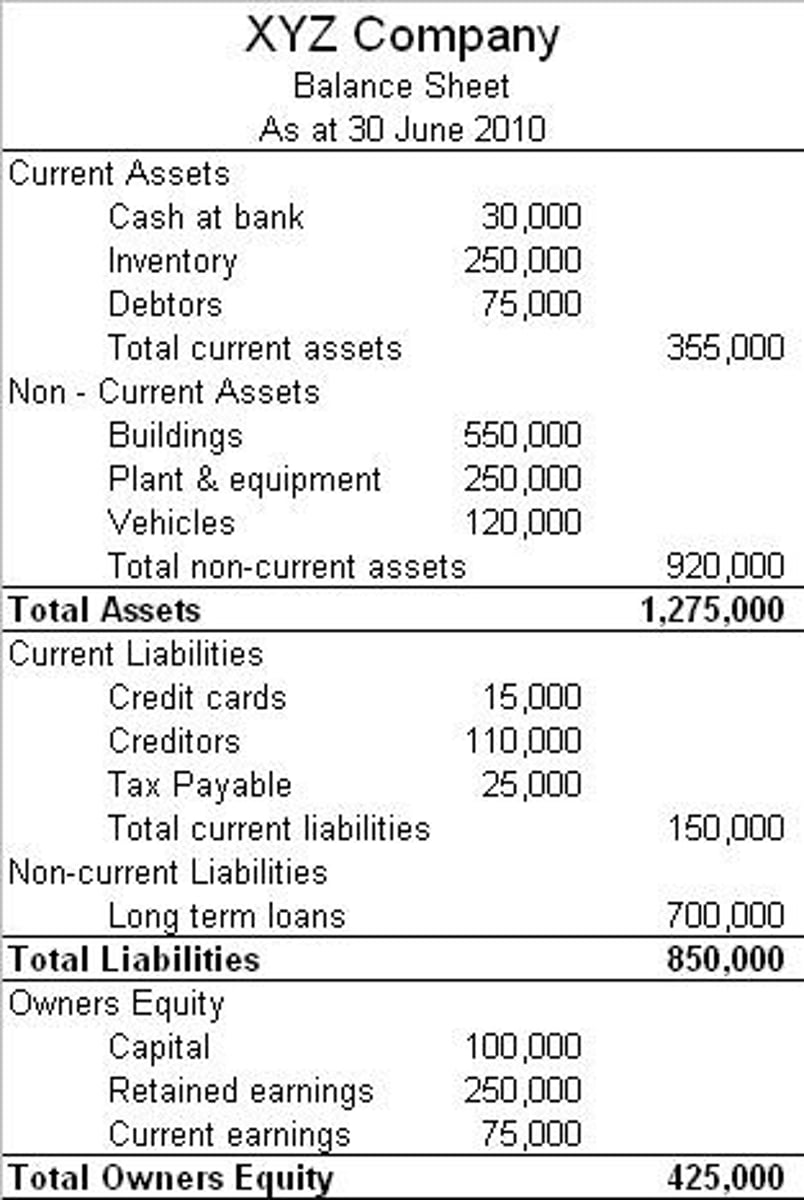
Double-Entry Bookkeeping
A transaction requires at least two entries to keep the balance sheet balanced
Dual-Aspect Concept
A basic accounting concept stating that there are two sides to every accounting transaction. If there is a change in the total amount of assets, there needs to be a resulting change in liabilities, equity, or both. (Recording both sides of each transaction is known as 'double-entry bookkeeping' or 'double-entry accounting'.)
Money-Measurement Concept
Recording and reporting economic activity in a common monetary unit of measure such as the dollar. Only items expressed as monetary amount can go on a balance sheet.
Balance Sheet Equation
Assets = Liabilities + Equity (aka. the accounting equation)
Assets
Items owned and controlled by an entity, valuable to the entity, and acquired at a measurable cost
Current Assets
Assets expected to be converted into cash or used up by the business within one year
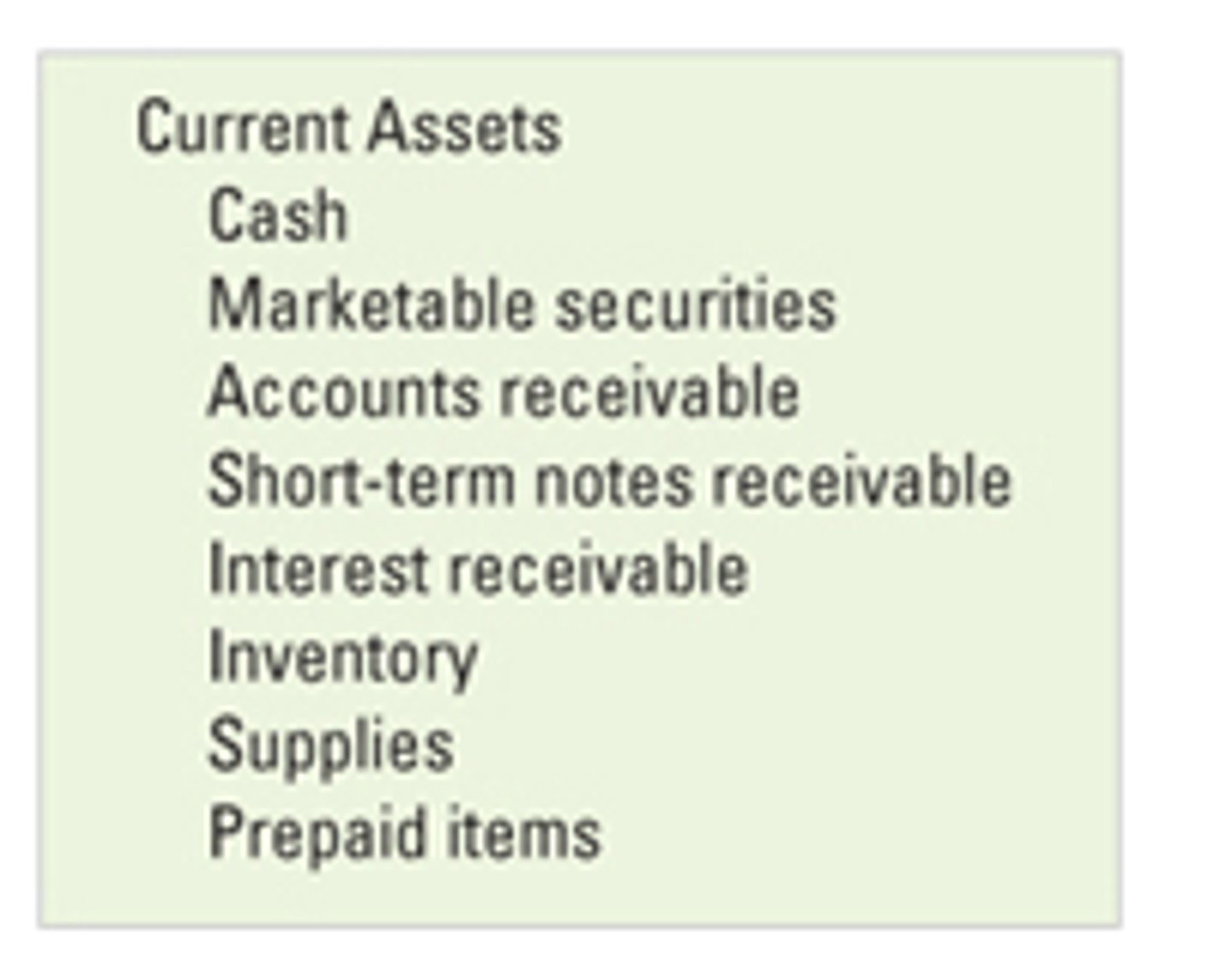
Accounts Receivable
Where a company records credit purchases by its customers. The company expects these customers to pay them in cash in the near future. (current asset)
Inventory
Goods an entity intends to sell (current asset)
Prepaid Expenses
Monies paid in advance for pending expenses - for example, paying rent in advance (current asset)
Noncurrent Assets
will not be used up or converted into cash for at least one year
Property, plant, and equipment (PP&E)
tangible assets that depreciate, or lose value, over time due to wear and tear (noncurrent asset)
Creditor
Anyone who lends money or extends credit
Liabilities
Debts owed to outside entities or creditors in return for borrowed goods, services, or monies
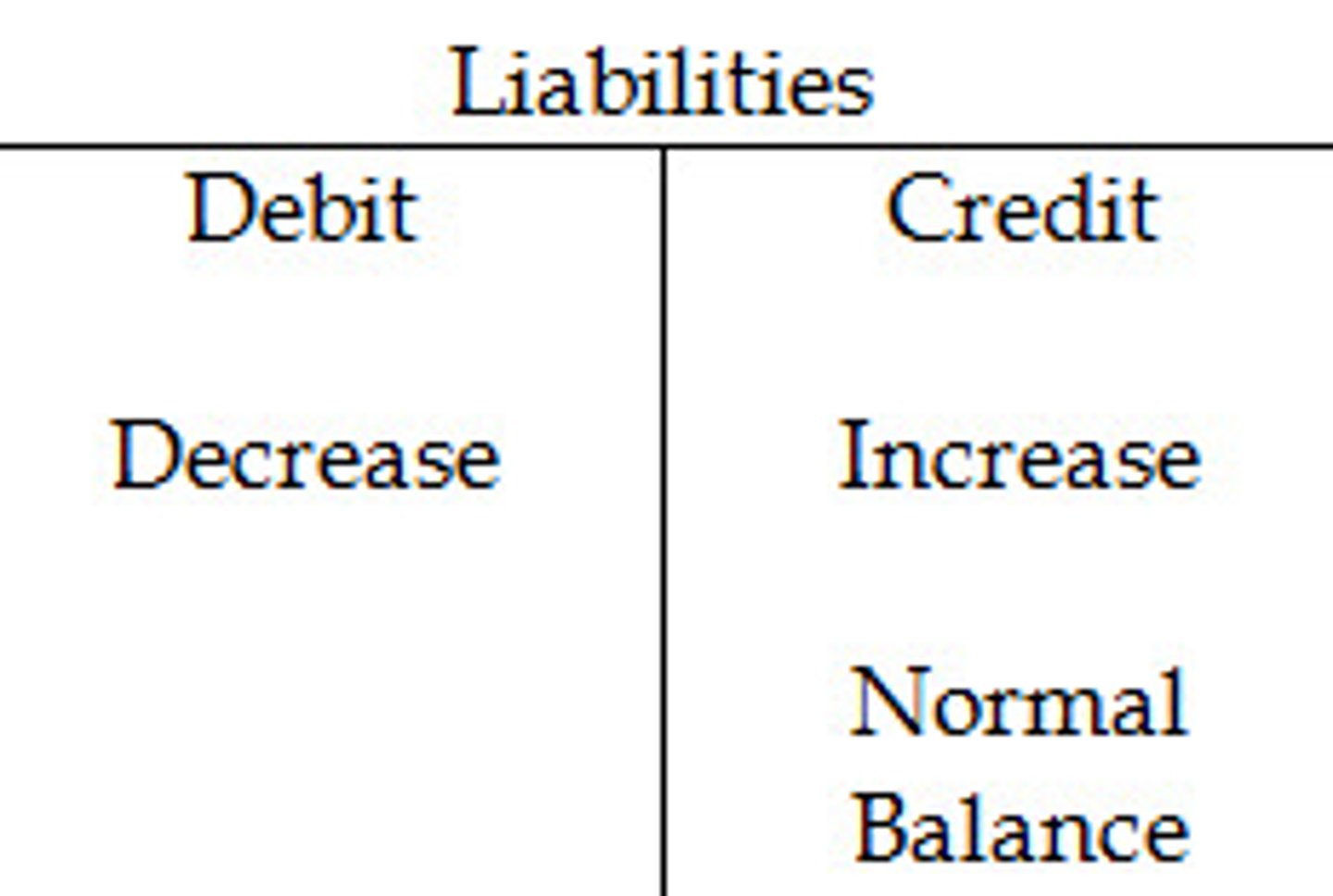
Current liabilities
obligations that will be paid within one year
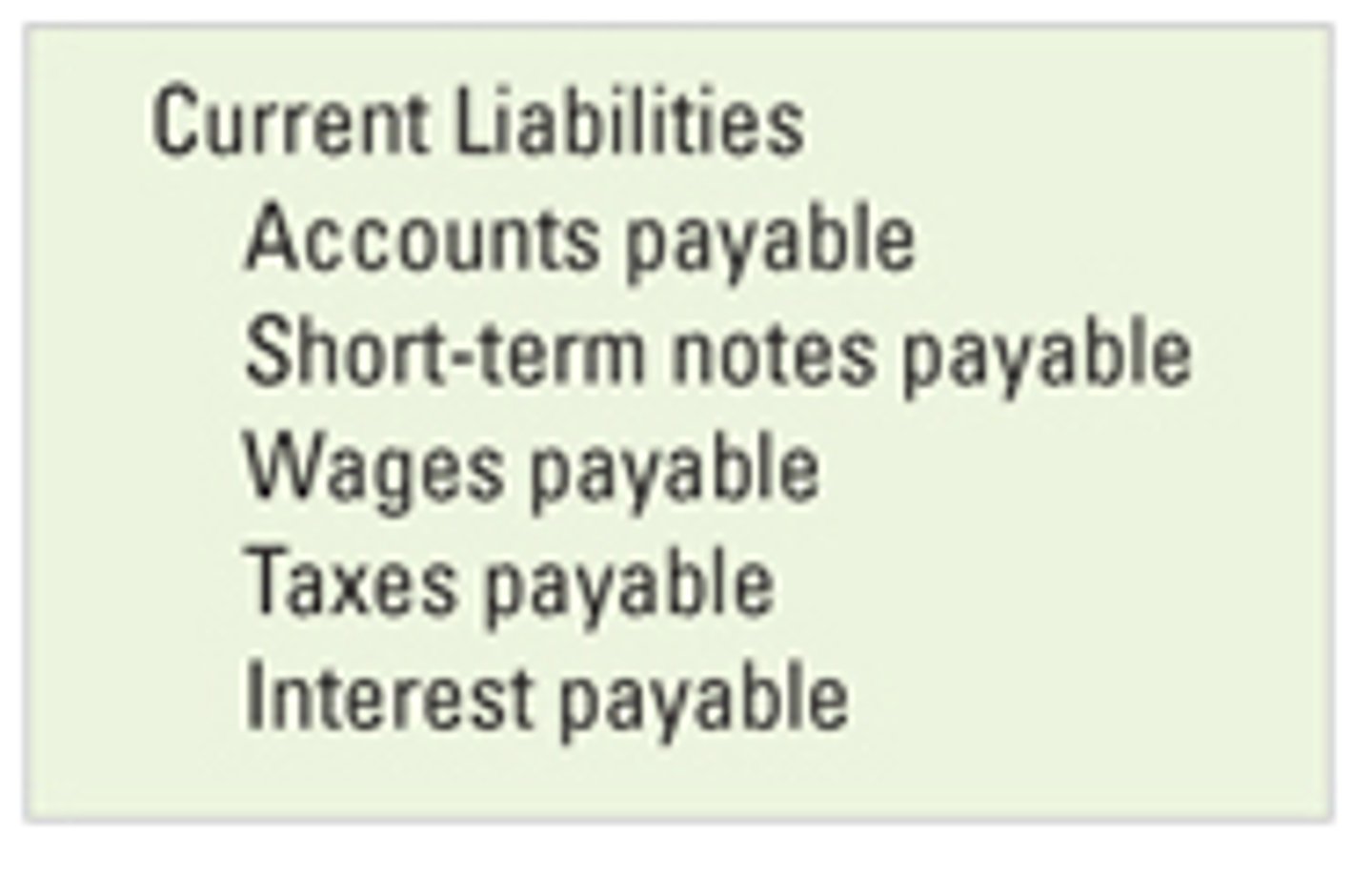
Long-term liabilities
Obligations that won't be paid until at least a year has passed
Bank Loans (Bank Loan Payable)
Can be recorded under both current and long-term liabilities.
Accounts Payable
Obligatory monies owed by an entity for goods and services. The opposite of Accounts Receivable.
Estimated Tax Liability
The estimated amount of what will be due in taxes per year
Equity
Money (capital) either supplied by equity investors or collected in the form of an entity's retained earnings.
Paid-In Capital
Money supplied by investors through the purchase of stock
Retained Earnings
Income generated by an entity's successful operations that is reinvested in the entity
Proprietorship
An entity with one sole owner and investor
T-accounts
Charts used to record increases and decreases of individual accounts found on the balance sheet
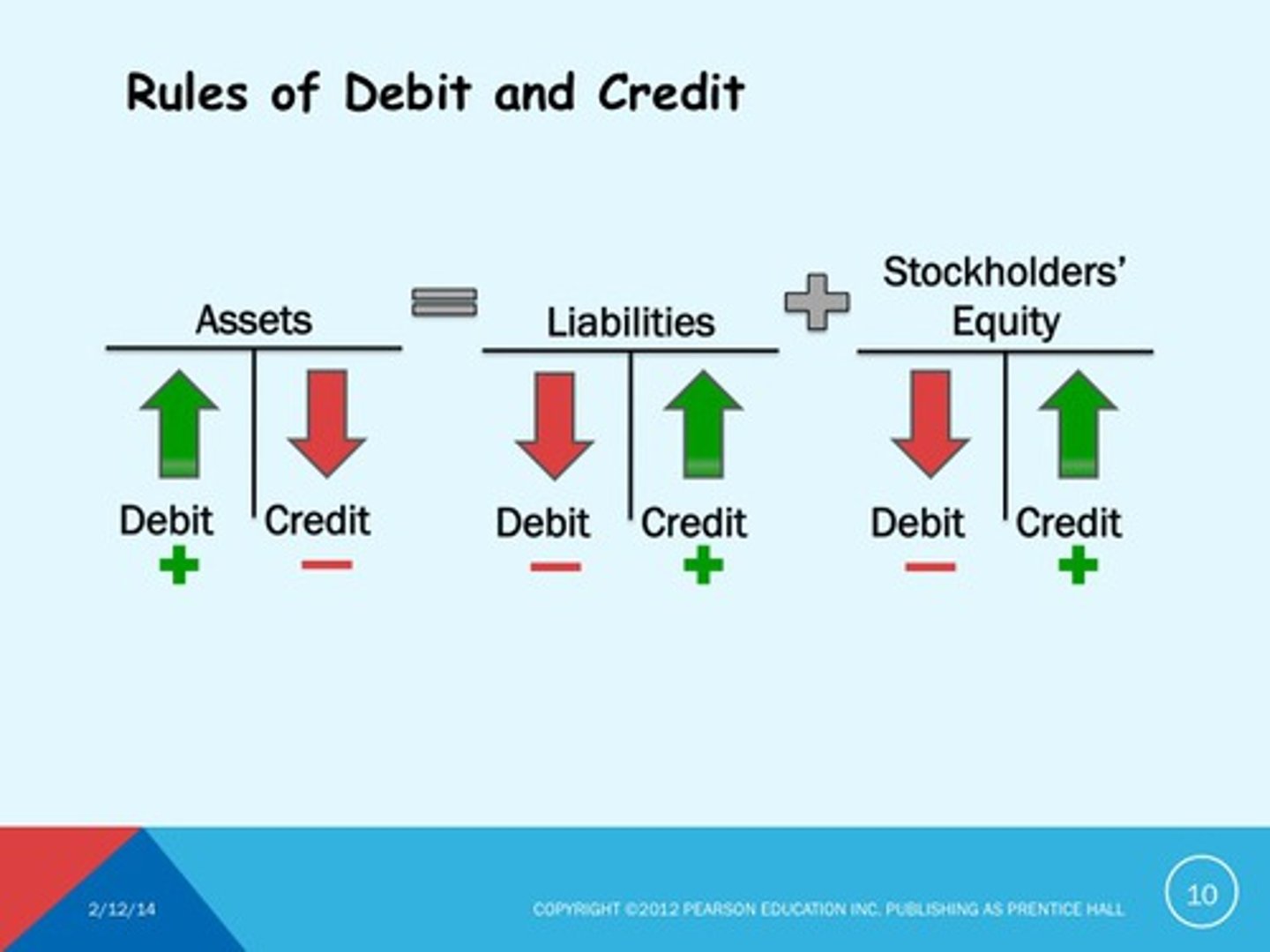
Debits
Represents an increase in an asset but a decrease in a liability or equity
Credits
Represents a decrease in an asset but an increase in a liability or equity
Asset accounts will normally have which type of a balance?
Debit
Liability and Equity accounts will normally have which type of a balance?
Credit
Revenues and Expenses are what type of account?
Equity
Revenues represent increases in what type of account? And what kind of balance?
Equity / credit
Expenses represent decreases in which type of account? And what kind of balance?
Equity / debit
What's the difference between revenue and expenses as equity accounts?
Revenues are debited and credited like equity accounts (i.e. debit is a decrease and credit is an increase).
Expenses are debited and credited like asset accounts (i.e. debit is an increase and credit is a decrease).
Income Statement
A financial statement that reports a company's revenues and expenses and resulting net income or net loss for a specific period of time.
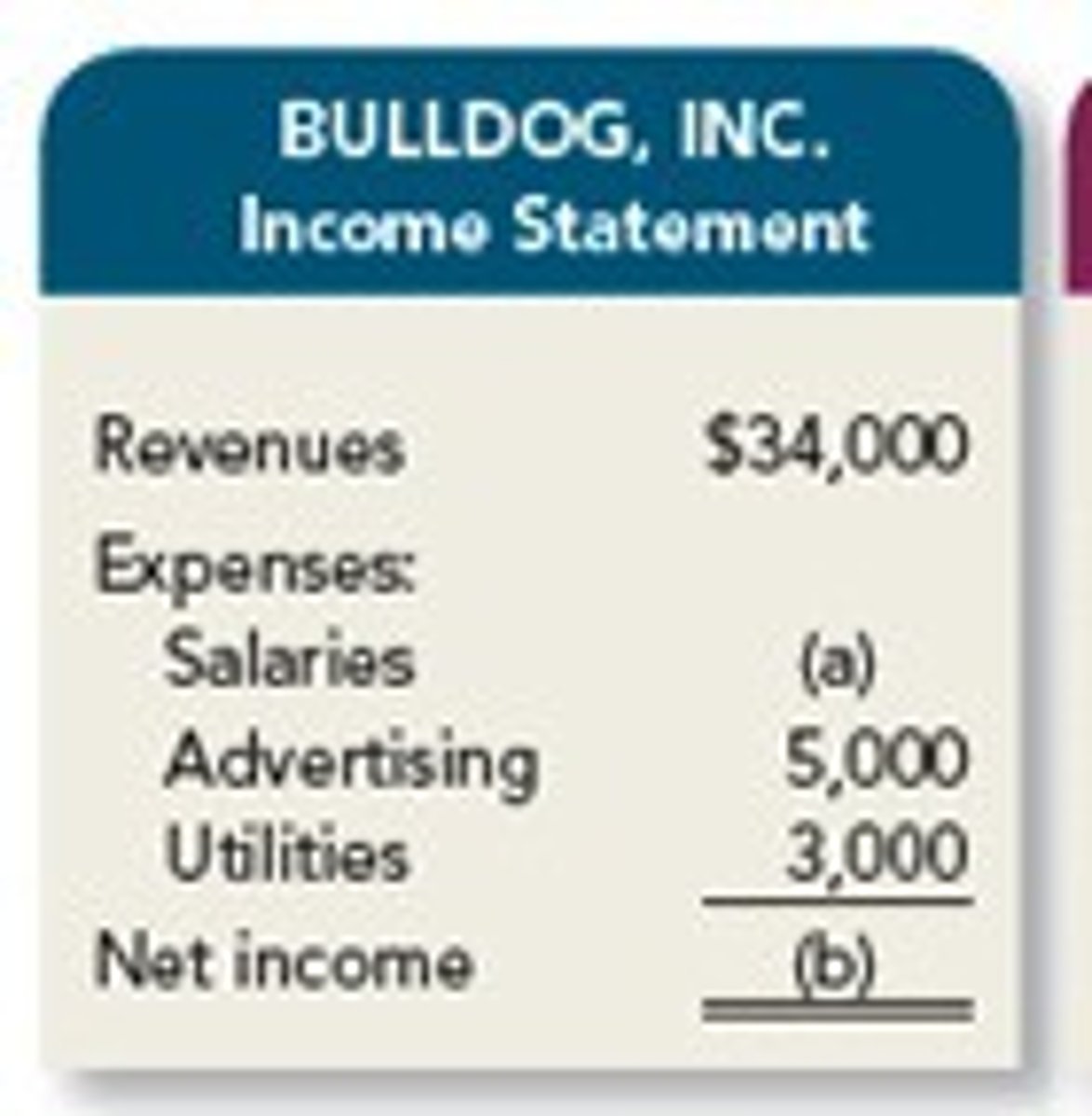
Net Income
The difference between total revenues and total expenses. A firm's earnings after paying all expenses.
Net income = operating profit - (interest + taxes)
Net Income Equation
Net Income = Revenues - Expenses
What's the difference between balance sheets and income statements?
Balance sheets record one point in history and show a company's financial position. Income statements measure a company's financial performance over a period of time.
General Journal
The chronological record of every transaction. Uses the same rules as a T-account.
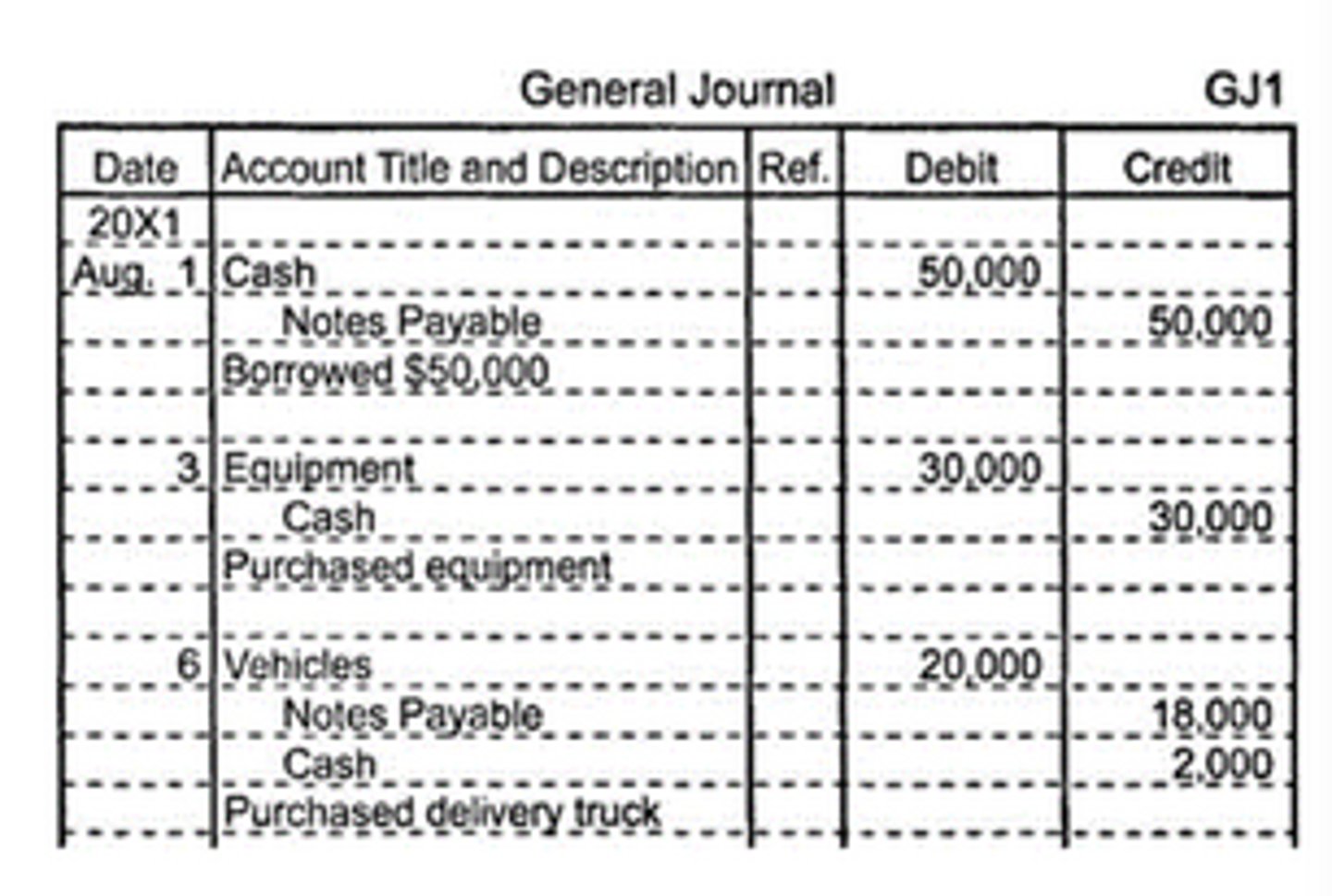
General Ledger
The collection of all T-accounts. Where Revenues and expenses are temporary accounts. At the end of a period they are closed out and their balances are transferred to the income statement.
Other asset, liability, and equity accounts are permanent accounts. They are not closed out, and their balances are transferred to the balance sheet.
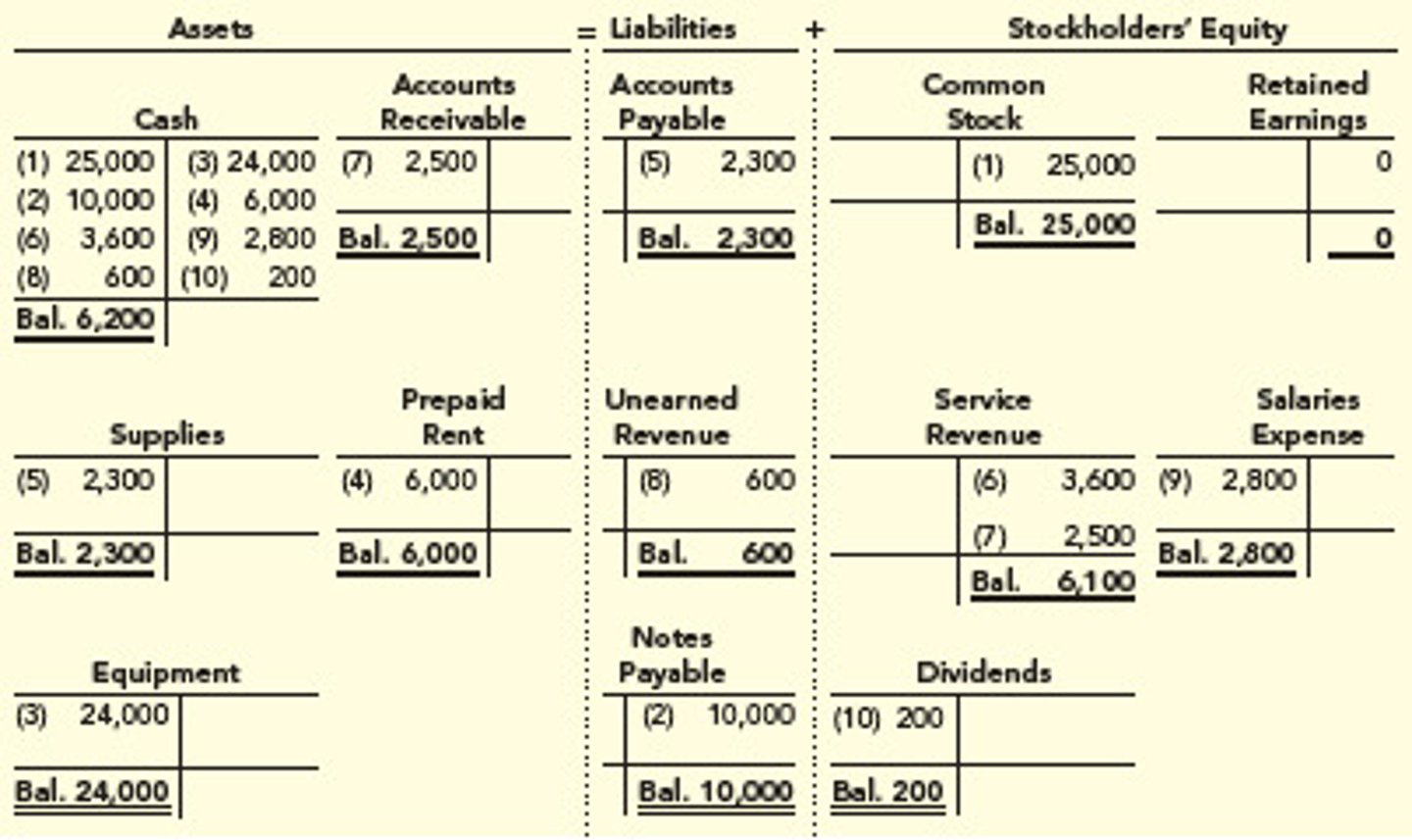
Accrual accounting
Revenues and expenses are not necessary recognized when cash is received or paid out - unlike cash accounting, where revenues are recorded when cash is received and expenses are recorded when they are paid.
Conservatism Concept
Increases in revenue are recorded only when there is reasonable assurance that payment will be received.
Realization Concept
An increase to revenue isn't recorded until the product (or service) has been delivered.
Deferred Revenue
A liability account used when a customer has paid for a product or service but the product or service has not yet been delivered.
How do you record expenses?
Expenses are recorded in the same accounting period as their associated revenues or in the accounting period(s) in which their benefits are used.
Expenditures
Costs that are not expenses that either decrease assets or increase liabilities.
Unexpired Expenditures
The benefits of the expenditures have not yet been realized.
Expired Expenditures
The benefits of the expenditures have been used up. The expenditures are now expenses.
Bad Debt
Revenue owed, but failed to be collected.
Allowance for Doubtful Accounts
An estimation accounts use to preemptively assume how much revenue (bad debt) will fail to be collected. Contra-asset account containing the estimated uncollectible accounts receivable. The allowance for doubtful accounts is subtracted from accounts receivable at the end of the accounting period.
What type of account is Accounts Receivable?
Asset
What type of account is the allowance for doubtful accounts?
Contra-asset
What type of account is the Bad Debt Expense?
Equity
What type of account is Deferred Revenue?
Liability
Cost Accounting
An area of accounting that involves measuring, recording, and reporting product costs. The process of determining how much a unit of inventory costs.
Cost of Goods Sold (COGS)
The expense account associated with the sale of inventory. The expenses required to make goods or provide services. This includes the cost of materials and labor needed to make the good or provide the services. gross profit = revenue - COGS
Specific identification method
An inventory costing method based on the specific cost of particular units of inventory. Identifying the cost of inventory by expensing inventory sales as they occur.
First-In, First-Out (FIFO) Method
Method of accounting for the cost of inventory by expensing the cost of the oldest inventory first.
Last-In, First-Out (LIFO) Method
Method of accounting for the cost of inventory by expensing the cost of the newest inventory first.
Conversion Costs
Include direct labor and overhead costs for producing a good or service (i.e. converting raw materials into the inventory product)
Direct Costs
Include material costs and labor costs for a good or service
Indirect Costs
Include overhead costs for a good or service
Production Overhead
An indirect cost that includes all the general costs of the production process, minus direct costs (direct labor and raw materials) and selling, general, and administrative (SG&A) activities.
Overhead Rate
Distributes the overhead costs to inventory based on metrics such as labor costs, labor hours, etc.
Fixed Assets
Tangible, non-current assets
Service Life of a Fixed Asset
The expected amount of time (often estimated by a tax authority) that a fixed asset will remain useful before succumbing to wear-and-tear or obsolescence.
Depreciation
The means by which the cost of a fixed asset is expensed over time.
Depreciation expense
The amount of depreciation assigned to an asset each accounting period.
Straight-line depreciation
A method of depreciating an asset in equal amounts each accounting period of the asset's service life.
Units of production
A method of assigning depreciation based on the output of an asset.
Accelerated depreciation
A method of assigning more depreciation expense in the beginning of an asset's service life and less at its end.
Accumulated depreciation
The total depreciation a fixed asset has undergone to-date; also the contra-asset account recording the total depreciation of all assets.
Book Value (of an asset)
The difference between an asset's cost and its accumulated depreciation
Gain (Loss) on Asset Disposal
Where the difference between the sale value of an asset and its book value is recorded - as an equity account
Wasting Assets
Natural resources - such as wells and mines - that undergo depletion
Depletion
Occurs as wasting assets are used up
Depletion Base (of a wasting asset)
Similar to the depreciable cost of an asset, this is the total value of a wasting asset that will undergo depletion.
Depletion Rate (of a wasting asset)
Is equal to the depletion base divided by the total number of units of a substance that will be extracted from a resource.
Amortization
Process by which intangible assets (e.g. logos) are expensed over time in accordance with the matching concept.
Dividend
A sum of money paid by a company to its shareholders.
Stock
A security (financial instrument) that signifies partial ownership of a company. Also known as a share.
Common Stock
Owners of common stock have the right to vote for a corporation's board of directors. Dividends are not guaranteed. Bigger risk, bigger reward.
Preferred Stock
Owners of preferred stock lack voting rights but are usually paid regular dividends. These must be paid before dividends are distributed to common shareholders. Less risk, less reward.
Convertibles (stocks)
Preferred shares that can be converted into common shared.
Treasury Stocks
Shared that a company has bought back from its shareholders.
Declaration Date
The day a company approves a dividend disbursement but not the actual distribution date.
Dividends Payable
Dividends that a company's board of directors has declared but not yet paid to its shareholders.
Appreciate (stock)
When a stock increases in value
When does a bull market occur?
When the stock market rises consistently.
Depreciate (stocks)
When a stock decreases in value.
When does a bear market occur?
When the stock market falls consistently.
Where can public stocks be purchased?
At an exchange or on the stock market?
What is the difference between the primary and secondary market (for stocks)?
The primary market is where a company can sell its stock to individuals - the secondary market is where stocks are traded after being purchased from the issuing company. "Stock market" usually refers to the secondary market.
Par value (stocks)
The printed price of a share, often only $.01. Par value is not required in some jurisdictions.
Additional Paid-In Capital
Any payment received from the investors for stock that exceeds the par value of the stock.
Contra-Equity Account
An account with a debit balance (i.e. debit for increases and credit for decreases) that reduced a company's total equity.
Debt (bonds)
Money borrowed in exchange for interest
Secured debt (bonds)
Borrowed money that is backend by one or more assets as collateral.
Unsecured debt (bonds)
Borrowed money that is not backed by collateral.
Principal (bonds)
The original amount of money that was borrowed